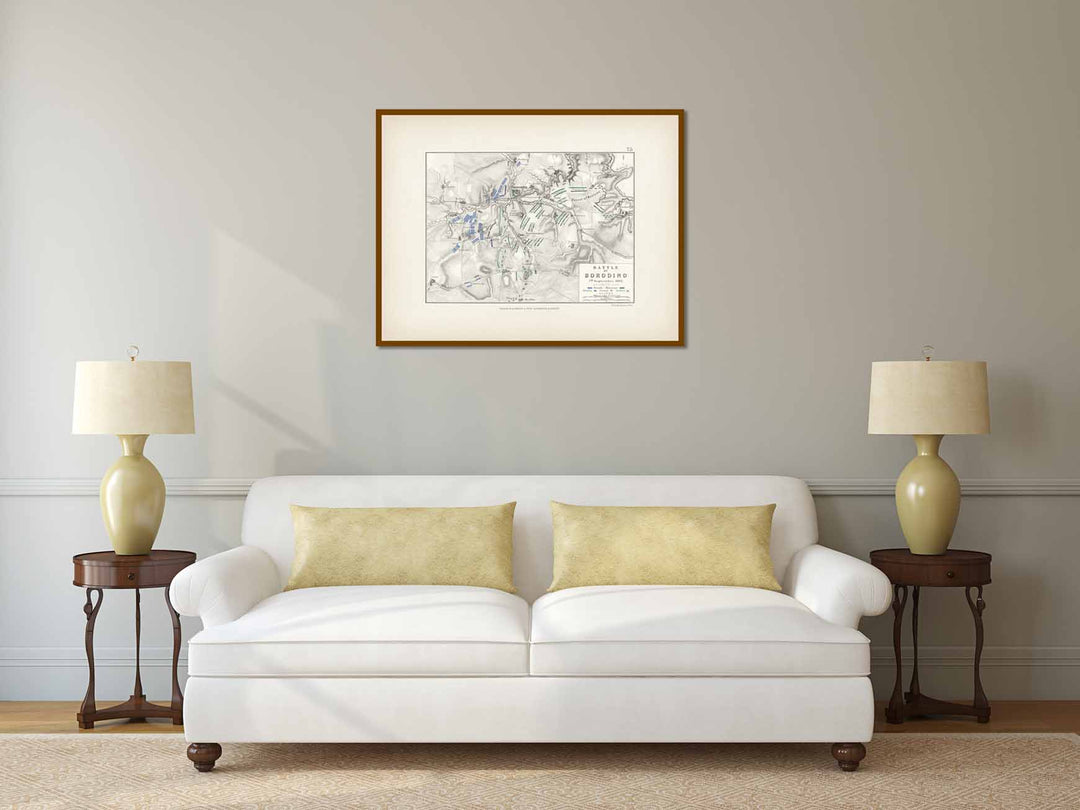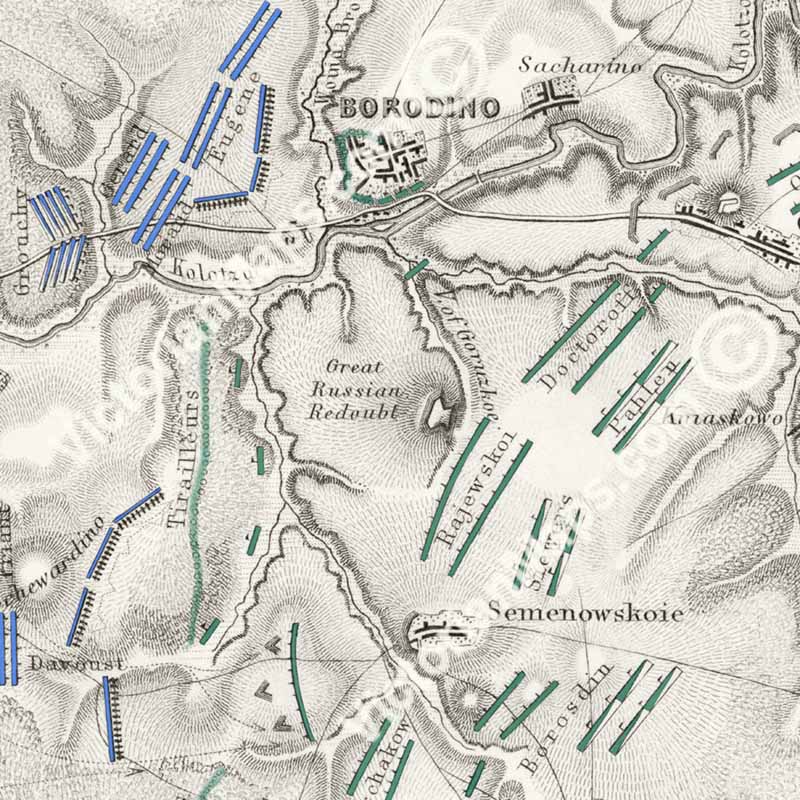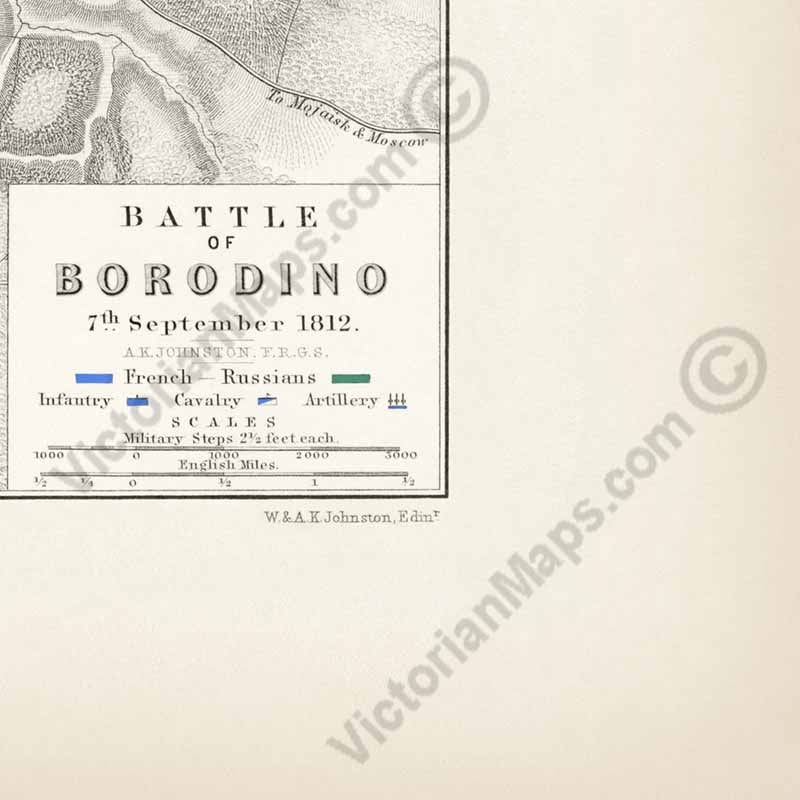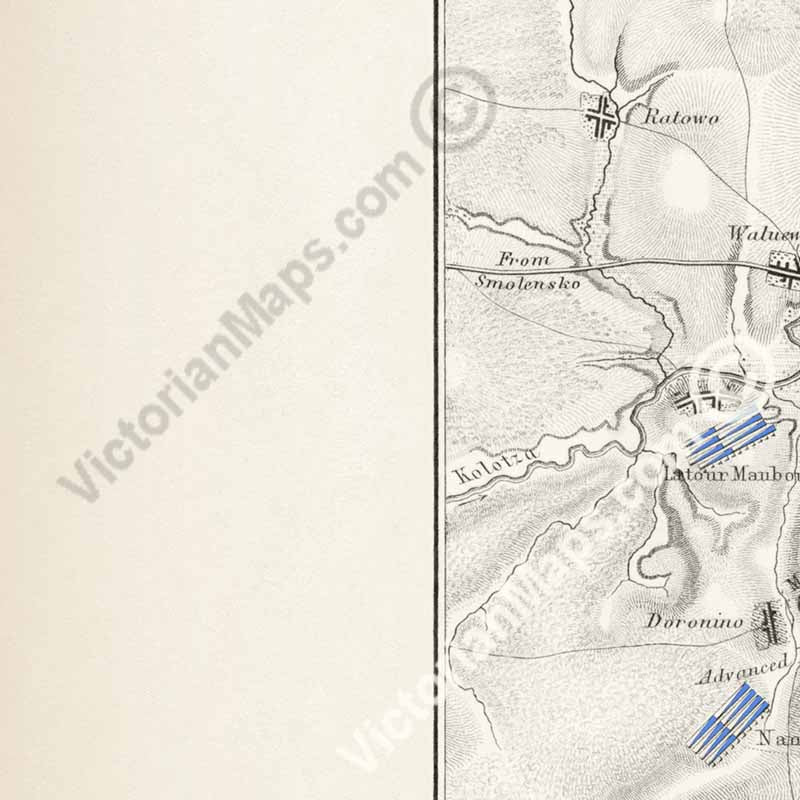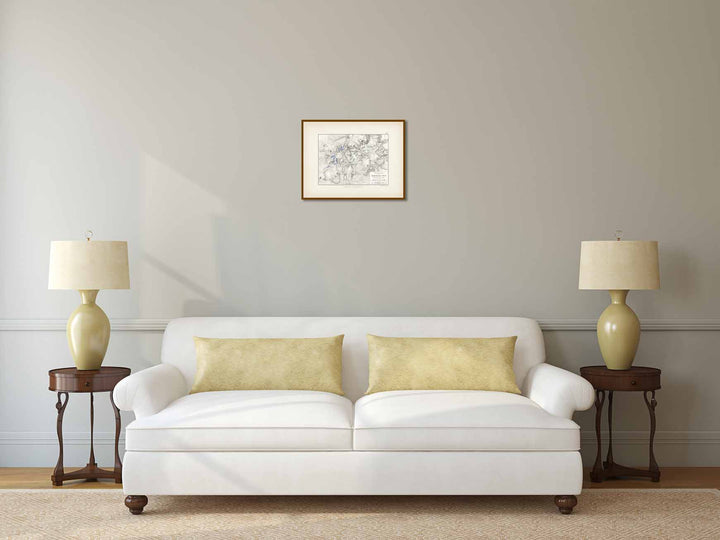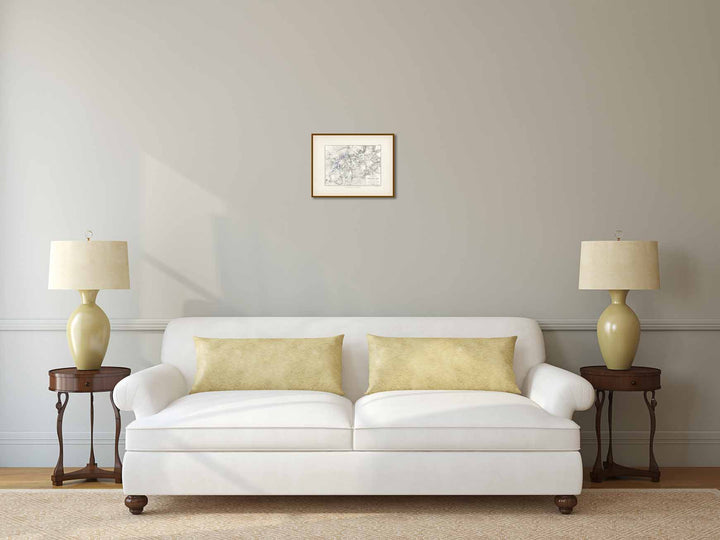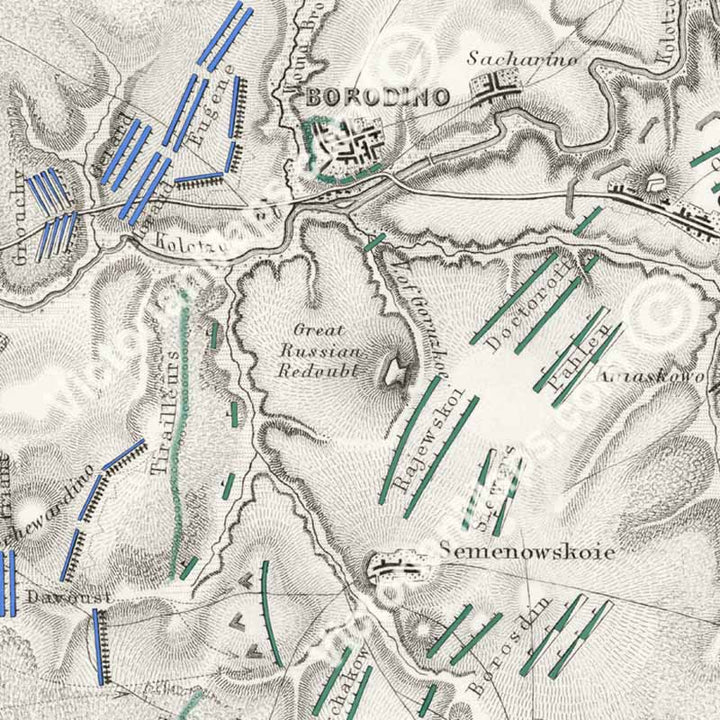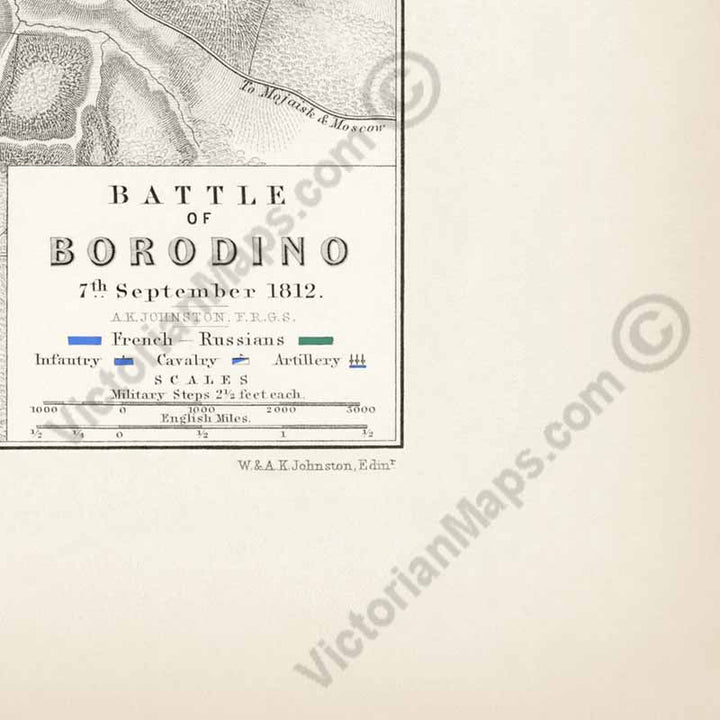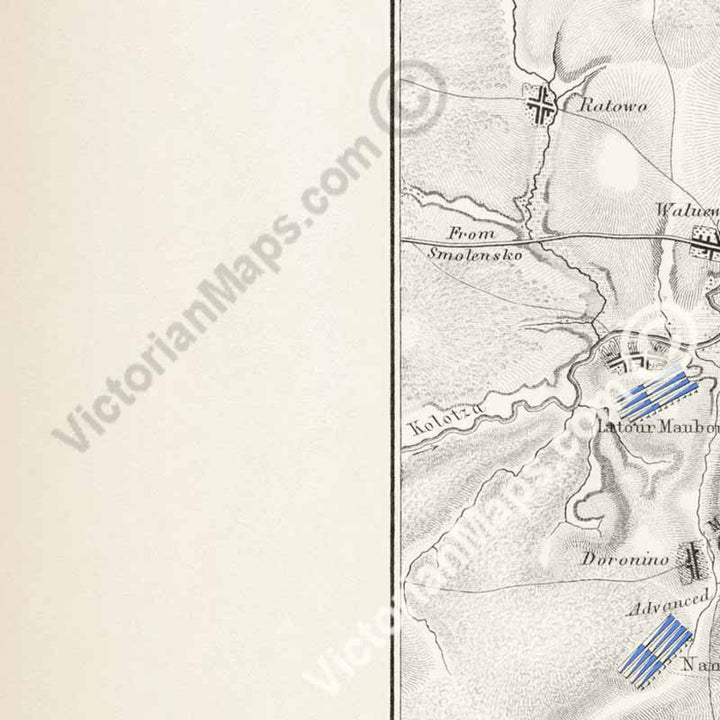Battle of Borodino 7 September 1812 An engraved and hand-coloured map 75, A. K. Johnston, Atlas to Alison's History of Europe, 1850 art print poster canvas gift
- High-quality product
- Perfect gift
- In stock, ready to ship
- Backordered, shipping soon
Battle of Borodino 7 September 1812 (map plate 75), engraved by A.K. Johnston for Atlas to Alison's History of Europe, published by W. Blackwood & Sons, Edinburgh & London, in 1850.
Alexander Keith Johnston (1804 - 1871) was a Scottish geographer and cartographer. His initial interest to geography was inspired by inaccuracy of maps Johnston used in his early years hiking in West Highlands. After graduating from University of Edinburgh he joined his brother in printing business "W. & A. K. Johnston" which used the clan motto "Ready Aye Ready" as their logo. The rest of Johnston's life was devoted to geography and map making. Among other works, Johnston created the first English language physical globe of the world, and an atlas of military geography to accompany Alison's History of Europe, first published in 1848. The company W & A K Johnston were appointed engravers to King William IV and Johnston was later elected a Fellow of the Royal Society of Edinburgh.
The Battle of Borodino was fought near village of Borodino on 7 September 1812 during Napoleon’s invasion of Russia. The French Grand Armée (128,000) has won the battle, but at the cost of severe losses and without decisive victory over Russian forces (155,200) under General Michail Kutuzov. The fighting began at 6-00 by French artillery fire and by 11-30 the French were in control of Russian positions. The smoke was impenetrable and the fighting was so intense that infantry and cavalry had difficulty manoeuvring over the heaps of corpses and wounded. Russian general Barclay de Tolly later described moving his troops forward as “a walk into Hell”. With loss of positions and several leading generals, Russian moral and command structure started to collapse, and Russian army had fallen back. Several French generals asked Napoleon to commit the Imperial Guard to the battle, for a final blow. At this crucial point however, Napoleon, who have been sick with cold, was reluctant to use his Imperial Guard, which remained in reserve throughout the battle. The Russian army managed to retreat, allowing the French to march into Moscow. The losses of both armies accounted to a third of total with 28.000 French killed and wounded, while the Russian casualties were around 44.000. The French army was in occupation of Moscow for five weeks, while Napoleon was waiting for a Russian surrender which never came. Once the freezing weather set in, Napoleon attempted to escape the country and save the army. This winter retreat was plagued by the cold, disease, hunger and Russian attacks, all of which turned French withdrawal into a catastrophe which shattered Napoleon’s reputation of invincibility.
This poster is a high quality "giclée" reproduction of a painstakingly restored antique original, custom-printed on Standard Single-weight Matt Coated art paper 140gsm or Heavyweight Matt Coated art paper 230gsm (more of a thin card density), or superb Epson Matt Canvas 320gsm, according to your choice. We use the latest UltraChromeHDX pigment inks which guarantee 60 years of colour permanence (up to 200 years fade-proof for colour prints). This poster is suitable for mounting and framing, as well as direct display on a wall.
All prints are made to order and carefully checked before posting. Our restored charts and maps are exclusive to VictorianMaps and not available anywhere else. There are no watermarks on the prints.
Combined shipping available—add all items to your basket to see the adjusted rate. Any extra postage paid will be refunded.
Returns:
If you're not satisfied, return within 14 days for a full refund.
For framing, we recommend the 230gsm paper or 320gsm canvas. The 140gsm paper is best for DIY framing or wall tacking.



